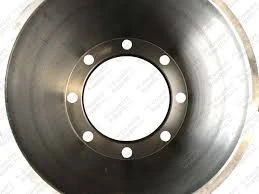
-
 Afrikaans
Afrikaans -
 Albanian
Albanian -
 Amharic
Amharic -
 Arabic
Arabic -
 Armenian
Armenian -
 Azerbaijani
Azerbaijani -
 Basque
Basque -
 Belarusian
Belarusian -
 Bengali
Bengali -
 Bosnian
Bosnian -
 Bulgarian
Bulgarian -
 Catalan
Catalan -
 Cebuano
Cebuano -
 Corsican
Corsican -
 Croatian
Croatian -
 Czech
Czech -
 Danish
Danish -
 Dutch
Dutch -
 English
English -
 Esperanto
Esperanto -
 Estonian
Estonian -
 Finnish
Finnish -
 French
French -
 Frisian
Frisian -
 Galician
Galician -
 Georgian
Georgian -
 German
German -
 Greek
Greek -
 Gujarati
Gujarati -
 Haitian Creole
Haitian Creole -
 hausa
hausa -
 hawaiian
hawaiian -
 Hebrew
Hebrew -
 Hindi
Hindi -
 Miao
Miao -
 Hungarian
Hungarian -
 Icelandic
Icelandic -
 igbo
igbo -
 Indonesian
Indonesian -
 irish
irish -
 Italian
Italian -
 Japanese
Japanese -
 Javanese
Javanese -
 Kannada
Kannada -
 kazakh
kazakh -
 Khmer
Khmer -
 Rwandese
Rwandese -
 Korean
Korean -
 Kurdish
Kurdish -
 Kyrgyz
Kyrgyz -
 Lao
Lao -
 Latin
Latin -
 Latvian
Latvian -
 Lithuanian
Lithuanian -
 Luxembourgish
Luxembourgish -
 Macedonian
Macedonian -
 Malgashi
Malgashi -
 Malay
Malay -
 Malayalam
Malayalam -
 Maltese
Maltese -
 Maori
Maori -
 Marathi
Marathi -
 Mongolian
Mongolian -
 Myanmar
Myanmar -
 Nepali
Nepali -
 Norwegian
Norwegian -
 Norwegian
Norwegian -
 Occitan
Occitan -
 Pashto
Pashto -
 Persian
Persian -
 Polish
Polish -
 Portuguese
Portuguese -
 Punjabi
Punjabi -
 Romanian
Romanian -
 Russian
Russian -
 Samoan
Samoan -
 Scottish Gaelic
Scottish Gaelic -
 Serbian
Serbian -
 Sesotho
Sesotho -
 Shona
Shona -
 Sindhi
Sindhi -
 Sinhala
Sinhala -
 Slovak
Slovak -
 Slovenian
Slovenian -
 Somali
Somali -
 Spanish
Spanish -
 Sundanese
Sundanese -
 Swahili
Swahili -
 Swedish
Swedish -
 Tagalog
Tagalog -
 Tajik
Tajik -
 Tamil
Tamil -
 Tatar
Tatar -
 Telugu
Telugu -
 Thai
Thai -
 Turkish
Turkish -
 Turkmen
Turkmen -
 Ukrainian
Ukrainian -
 Urdu
Urdu -
 Uighur
Uighur -
 Uzbek
Uzbek -
 Vietnamese
Vietnamese -
 Welsh
Welsh -
 Bantu
Bantu -
 Yiddish
Yiddish -
 Yoruba
Yoruba -
 Zulu
Zulu
rear drum brakes dragging after replacement
Understanding Rear Drum Brakes Dragging After Replacement
After replacing rear drum brakes, many vehicle owners might experience an issue known as brake dragging. This phenomenon can lead to diminished performance, increased wear, and even safety hazards. Understanding why this occurs and how to address it is crucial for maintaining optimal braking efficiency.
Brake dragging occurs when the brake components do not fully release after the driver takes their foot off the brake pedal. In the context of rear drum brakes, there are several reasons this issue may arise, especially following a replacement.
Firstly, improper installation of the brake shoes can be a primary culprit. During the installation process, it’s essential that the shoes are correctly positioned to ensure that they retract fully when the brake is released. If the springs are not properly secured or positioned, this can lead to the shoes not returning to their resting position, thus causing dragging.
Another common reason for dragging could be related to the adjustment of the brakes. Rear drum brakes often utilize an adjuster mechanism designed to maintain the proper distance between the drum and the shoes. If this mechanism is either too tight or too loose, it can result in an inconsistent brake application, causing the shoes to rub against the drum even when not engaged. Regular adjustments can help mitigate these issues, ensuring that the brakes operate smoothly.
rear drum brakes dragging after replacement

Additionally, ensuring the drums themselves are in good condition is vital. If the drum is warped, cracked, or excessively worn, it can lead to uneven contact with the brake shoes, contributing to dragging. Inspecting the drums and considering resurfacing or replacing them if necessary is advisable, especially after installing new components.
Another factor to consider is the parking brake. If the parking brake cable is too tight, it may keep the shoes slightly engaged, leading to dragging when the vehicle is in motion. Adjusting the parking brake to ensure it disengages fully is essential for preventing this issue.
Lastly, check for any contaminants, such as grease or brake fluid, on the brake assembly, as these can impact brake performance. Ensuring a clean installation environment can help avoid such problems.
In conclusion, rear drum brakes dragging after replacement can stem from several factors, including improper installation, adjustment issues, the condition of the drums, and parking brake functionality. By understanding these issues, vehicle owners can take proactive steps to rectify them, ensuring a safe and efficient braking system. Regular maintenance and inspections can help catch these problems early, minimizing potential risks on the road.
-
Rear Drum Brakes Maintenance TipsNewsAug.04,2025
-
Key Components Affecting Brake Drum FunctionNewsAug.04,2025
-
Important Inspection for Truck Drum BrakeNewsAug.04,2025
-
How to Prepare for Changing Rear Drum BrakesNewsAug.04,2025
-
Essential Tools for Cleaning Drum Brakes ProperlyNewsAug.04,2025
-
Brake Drum Function GuideNewsAug.04,2025
-
Safety Features of Red Brake DrumsNewsAug.01,2025
